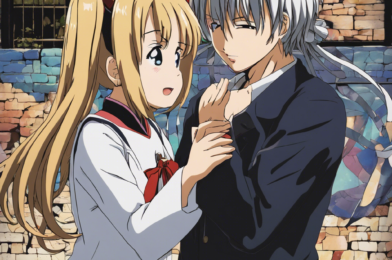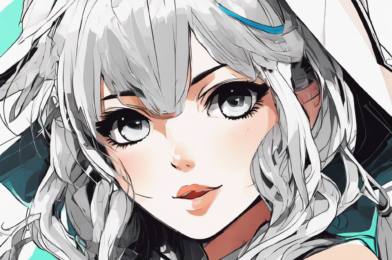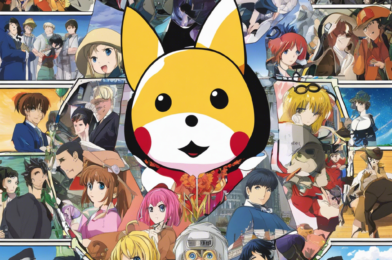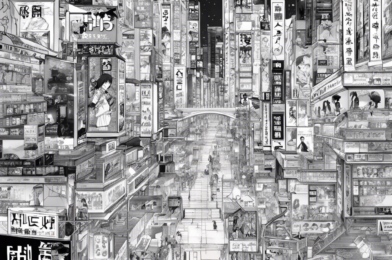Anime has a way of tugging at our heartstrings like no other medium. As someone who has been an avid fan for years, I’ve experienced countless emotional moments that have left me in tears, both of joy and sorrow. In this article, I’ll share some of the most poignant and unforgettable scenes from the world of anime that have stayed with me long after the credits rolled.
The Power of Sacrifice
One of the most emotionally charged themes in anime is the concept of sacrifice. When a character selflessly gives up everything for the sake of others, it’s impossible not to feel a lump in your throat. The iconic scene from Fullmetal Alchemist: Brotherhood where Hughes dies protecting Mustang is a prime example. His final moments, spent reassuring his best friend and reminiscing about his family, never fail to leave me a sobbing mess.
Similarly, the ending of Gurren Lagann, where Simon parts ways with his loved ones to ensure their safety, is a gut-wrenching display of pure selflessness. These scenes remind us of the depth of human emotion and the lengths we’re willing to go for those we care about.
The Pain of Loss
Grief is another emotion that anime handles with profound sensitivity. The aftermath of Menma’s death in Anohana: The Flower We Saw That Day is a masterclass in portraying the raw anguish of losing someone dear. As the former friends reunite and confront their unresolved feelings, each character’s unique way of coping with loss is laid bare, making it impossible not to empathize with their pain.
Clannad: After Story’s arc dealing with Nagisa’s tragic fate is equally heart-wrenching. The sheer devastation Tomoya experiences is palpable, and his journey through the depths of despair and eventual acceptance is a poignant reminder of the human capacity for resilience in the face of unimaginable loss.
The Beauty of Found Family
While anime often explores the darker emotions, it also celebrates the warmth and joy of found family. The bond between the Straw Hat Pirates in One Piece is a shining example of this. From Nami’s tearful apology to the crew after her betrayal to the emotional reunion with Robin after the Enies Lobby arc, these moments showcase the unwavering loyalty and love that can blossom among those brought together by circumstance.
The Elric brothers’ relationship in Fullmetal Alchemist is another heartwarming example. Despite the hardships they face, their devotion to each other is unshakable, and their willingness to sacrifice everything for one another is a testament to the strength of their bond.
The Triumph of Perseverance
Anime often celebrates the human spirit’s ability to overcome adversity, and few scenes capture this better than Naruto’s tireless pursuit of his dream. Watching him defy the odds time and again, never losing sight of his goal despite the challenges and setbacks, is a powerful reminder of the resilience we all possess.
Rock Lee’s unwavering determination in the face of his physical limitations in Naruto is equally inspiring. His refusal to give up, even when the odds seem insurmountable, is a testament to the indomitable human spirit and the power of perseverance.
The Bittersweetness of Farewells
As much as we grow attached to the characters we love, all good things must come to an end. The final episodes of long-running series like Naruto and Bleach are bittersweet affairs, as we bid farewell to the characters who have become like old friends.
The poignant scene in Naruto Shippuden where Naruto and Sasuke share a heartfelt embrace after their final battle is a perfect example. Despite their tumultuous past, their bond remains unbroken, and their parting is a reminder of the fleeting nature of all things, no matter how dear.
The Joy of Reunions
Just as farewells tug at our heartstrings, anime knows how to deliver emotional reunions that leave us grinning from ear to ear. The moment when Goku finally reunites with his sons after the Cell Games in Dragon Ball Z is a classic example. After years of hardship and sacrifice, seeing this family come together is a heartwarming reminder of the power of love and perseverance.
The reunion between Inuyasha and Kagome in the series finale is equally touching. After overcoming countless obstacles and weathering the storms of their turbulent relationship, their embrace is a testament to the enduring power of love and the bonds that transcend time and space.
The Bittersweet Reality of Growing Up
As we journey through life, we inevitably face the bittersweet reality of growing up and leaving our childhoods behind. Anime has a unique way of capturing this poignant transition, and few scenes encapsulate it better than the final episode of Clannad: After Story.
Watching Tomoya reflect on his life’s journey, from the carefree days of his youth to the joys and sorrows of adulthood, is a powerful reminder of the fleeting nature of time and the importance of cherishing every moment. The series’ message about embracing change and finding happiness in the present resonates deeply, leaving a lasting impression on all who witness it.
These are just a few of the countless emotional moments that have left an indelible mark on my soul. Anime’s ability to tap into the full spectrum of human emotion is what makes it such a powerful and enduring art form. Whether it’s the joy of found family, the pain of loss, or the triumph of perseverance, these stories have a way of resonating with us on a profound level, reminding us of the shared experiences that unite us all.
So, fellow anime fans, I encourage you to embrace these emotional journeys and let them move you. Laugh, cry, and revel in the sheer beauty of the human experience, for that is the true magic of anime.





